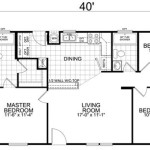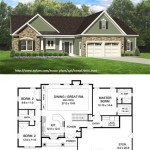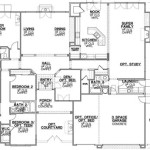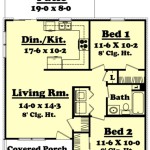Design My Own Home Plans
Designing your own home can be an incredibly rewarding and empowering experience. It allows you to create a space that perfectly suits your needs, tastes, and lifestyle. However, the process can also seem daunting, especially if you've never done it before. To make things easier, follow these steps to create stunning house plans that will bring your dream home to life.
1. Determine Your Needs and Budget
Before you start sketching, take some time to think about your current and future needs. How many bedrooms and bathrooms do you need? Do you want an open-concept layout or more traditional separate rooms? Consider your family's lifestyle and hobbies. Do you need a dedicated home office or a large family room? Once you have a clear understanding of your needs, you can start to set a budget for your project.
2. Gather Inspiration
Look for inspiration in magazines, online home design sites, and architectural books. Pay attention to floor plans, layouts, and design elements that appeal to you. Create a scrapbook or Pinterest board to collect ideas. This will help you narrow down your preferences and get a better sense of what you want in your home.
3. Sketch Out Your Ideas
Once you have some inspiration, start sketching out your own ideas. Don't worry about being an artist; simple floor plans and elevations will suffice at this stage. Focus on the overall layout of the home, the flow of space, and the placement of windows and doors. Don't be afraid to experiment with different ideas and ask for feedback from friends or family members.
4. Create a Detailed Floor Plan
Once you have a rough sketch, it's time to create a more detailed floor plan. Use graph paper or a home design software to draw the layout of your home to scale. Include the location of walls, windows, doors, furniture, and fixtures. Make sure to include dimensions and label each room. A detailed floor plan will help you visualize your design and identify any potential problems.
5. Design the Exterior
The exterior of your home is just as important as the interior. Consider the style of the neighborhood and the surrounding landscape. Choose materials that will suit your climate and personal taste. Draw elevations of your home from different angles, paying attention to the roofline, windows, and doors. Don't forget about outdoor spaces, such as patios, decks, and balconies.
6. Seek Professional Help (Optional)
If you feel overwhelmed or unsure about any aspect of your design, consider seeking professional help. An architect can provide guidance and expertise, ensuring that your home is structurally sound and meets building codes. They can also refine your design, create detailed construction drawings, and help you choose materials.
7. Finalize Your Plans
Once you're happy with your design, it's time to finalize your plans. This includes creating a detailed set of construction drawings, which will guide the construction of your home. These drawings should include floor plans, elevations, and sections. You may also need to obtain permits from your local building department.
Conclusion
Designing your own home plans is a challenging but rewarding undertaking. By following these steps and seeking professional help when necessary, you can create a unique and functional home that perfectly matches your needs. Remember to be patient, do your research, and most importantly, enjoy the process of creating your dream home.

Design Your Own House Floor Plans Roomsketcher

Design Your Own House Floor Plans Roomsketcher

Design Your Own House Floor Plans Roomsketcher

Design Your Own House Floor Plans Roomsketcher

Design Your Own House Floor Plans Roomsketcher

Floor Plan Creator Planner 5d

Floor Plan Creator Planner 5d

Design Your Own House Floor Plans Roomsketcher

Design Your Own House Floor Plans Roomsketcher

Floor Plans Learn How To Design And Plan








